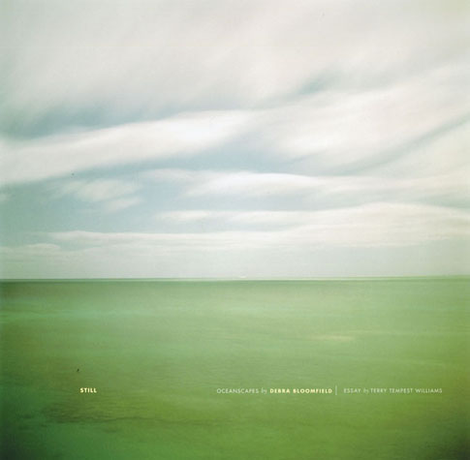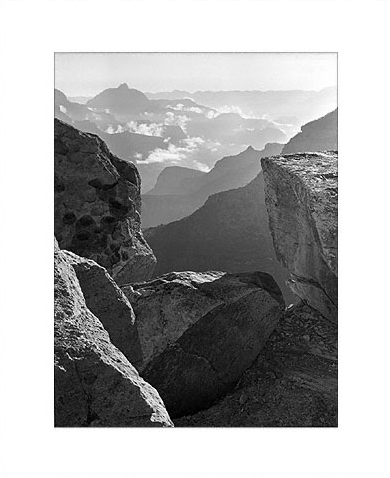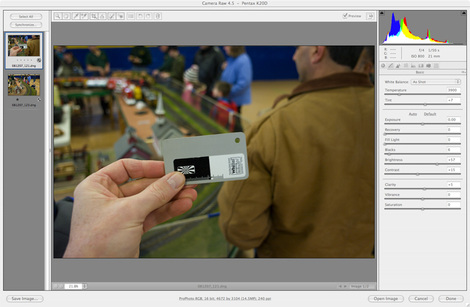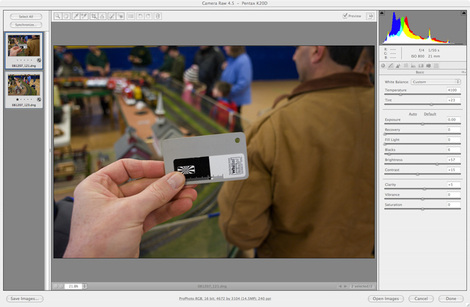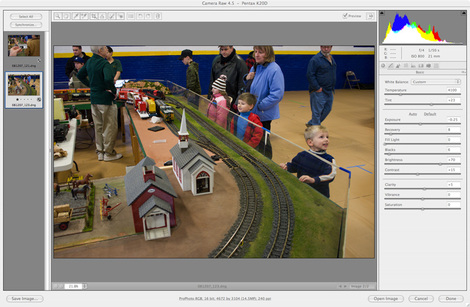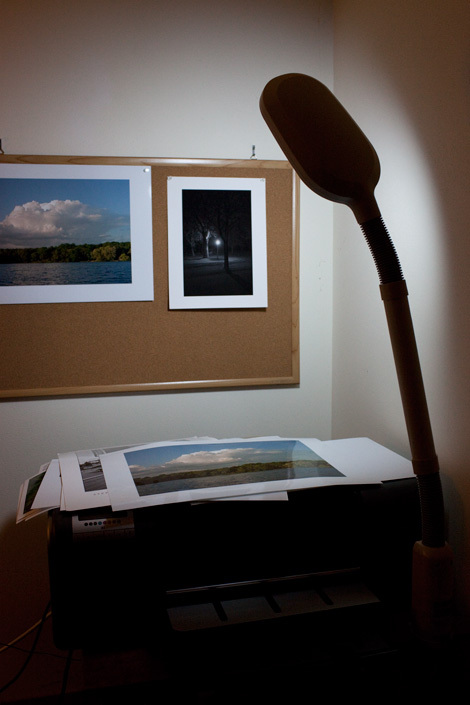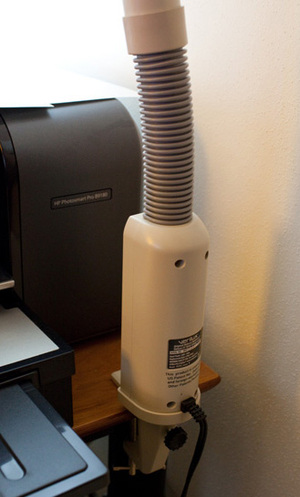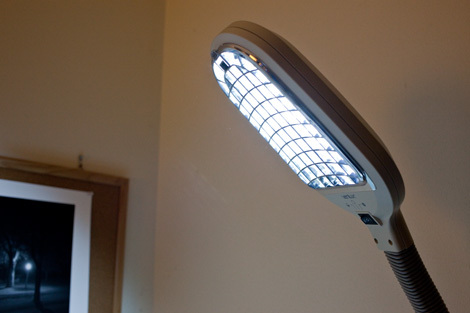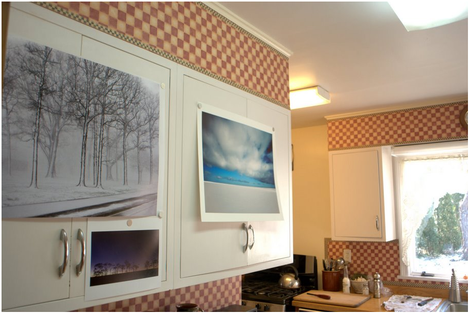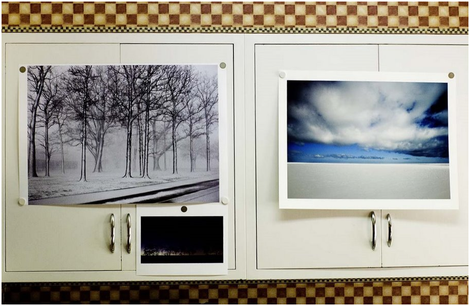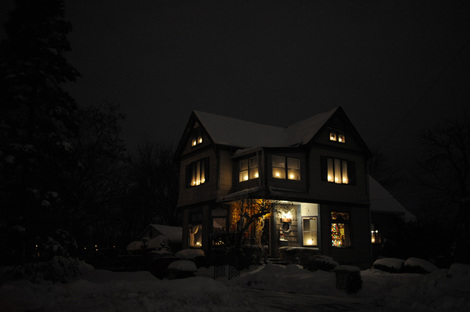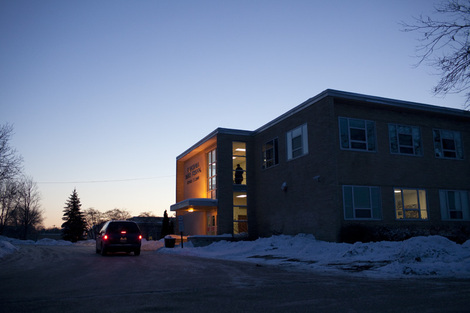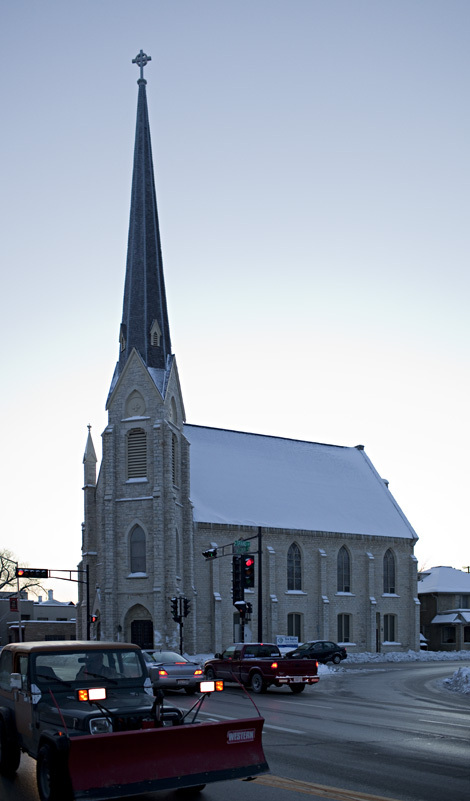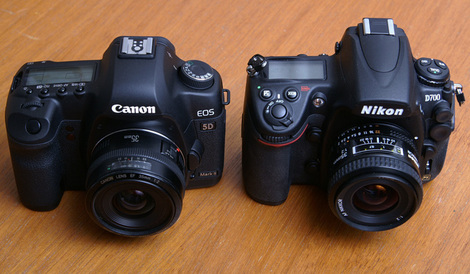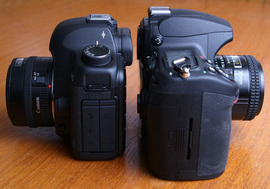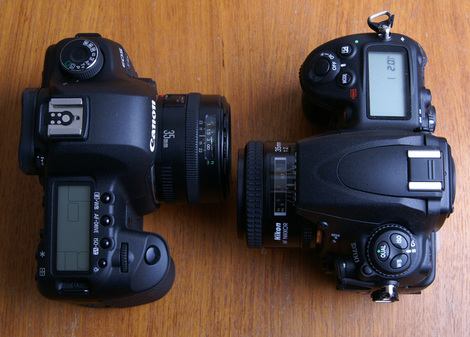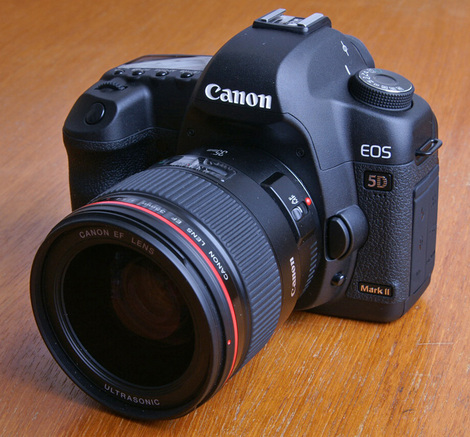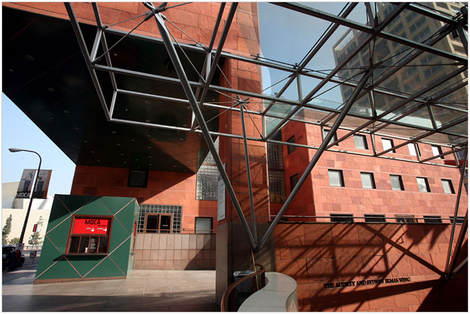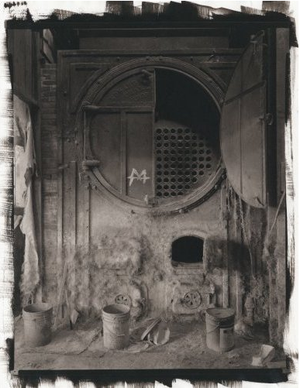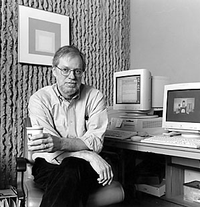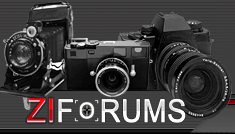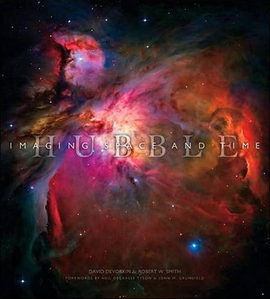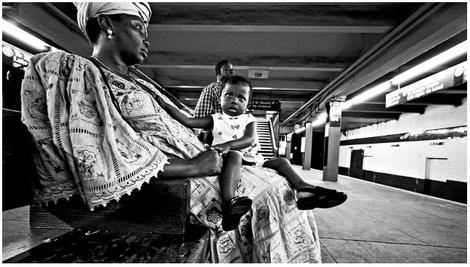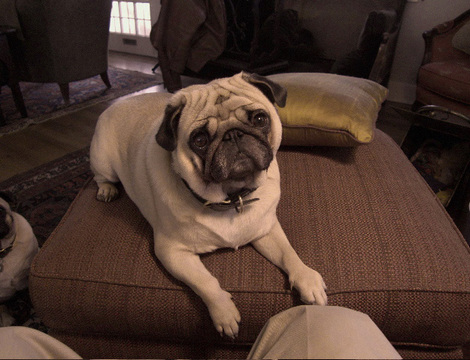...That is, the A900 vs. the D3/D700 vs. the 5D Mark II.
I admit to feeling considerably unhappy about having to summarize my own use of these three cameras "in public." I'm sure to disappoint almost everyone. "Brand partisans" being what they are these days, I'm probably going to take it on the chin, too. I'm even a bit miffed at myself, actually. Of all the tiresome endless squabbles in photography's little corner of the internet, the hoary old "Canon vs. Nikon" debate probably ranks as #1, and I kinda promised myself I was never going to get into it. How exactly did I, then?
Anyway, I've decided that rather than carefully annotate all of my tests and trials, which wouldn't begin to convince anybody anyway, I'll just come out with it and say what I think. But you've got to promise me you'll read this next bit and remember it as you go along, please: I'm not the arbiter. I don't get the final say. I'm just one photographer...one more, out of many. And I haven't bought, and am not going to buy, any of these cameras, so anything I say is not brand partisanship on my part, or self-congratulatory pride of ownership, or anxiety that I might have made the wrong choice, or insecurity that somebody else might own something better than mine, or fear that having a "less than the best" camera might reflect on my bad photography, or any of the other motives that fuel all the passionate nattering.
Sigh. The above is not going to protect me, I know. Had to try. For the record, I don't care to name a "best" because I'm not all about status, and I could care less whatever anyone personally chooses to use. It's the picture that counts.
And now, I gotta do what I gotta do.
The ultimate in image quality: Belongs to the Sony A900. That's assuming you're someone who knows how to use it and is willing to use it as it's intended to be used—it's not perfect for every style of work. But between its staggering resolution and very good dynamic range, its willing response to the Exposure and Recovery sliders, and its more "photographic" image quality (more on this later) and lack of digital artifacts—and despite its less-than-accurate color—it's the IQ emperor for now, among these four (i.e., the three under discussion and the D3). Downside: ya gotta need (or crave) that resolution. Otherwise it's just an also-ran. But if you do, you're just not going to get more impressive image files out of a 35mm-styled and -sized camera body.
The most recommendable: This prize goes to the Nikon D700. Given its sensible size compared to the D3, robust build, fast autofocus, overall responsiveness, superior ergonomics, unmatched high-ISO performance, and perfectly sensible file size, it's going to be the most bang for the buck for more photographers than either of the others. The Nikon is flat-out a better camera than the Canon, a point exemplified by its clearly superior autofocus performance (the 5D Mark II, when asked to autofocus, is sort of like "Huh? Oh, right," whereas the Nikon is a snappy "Yessir!") Its image quality is really pretty, and its files are superbly printable, and my feeling is that it would help more photographers take better pictures in more situations than either of the other two.
The best compromise: And here's where we come to the Canon 5D Mark II. No, the Canon does not have the A900's ungodly resolving power; but it comes reasonably close. And no, sorry, no matter what you've heard here, there, and everywhere, the Canon does not match the Nikon's high-ISO performance. Don't just look at the noise; look at the pictures. (I say that having made myself bleary-eyed poring over the most inane "test shots"—something I also once promised myself I'd do as little of as possible.) But it's pretty close. And here's the thing: it has much more resolution than the Nikon, and much better high-ISO capability than the Sony. So its win over the Nikon where resolution is concerned is bigger than the margin by which it loses to the Sony in the same department, and its win over the Sony in high-ISO performance is much more decisive than the margin by which it loses to the Nikon on that score. As they say in auto racing, when you're really good but not quite the best, what they call you is second—but strong seconds in two categories could be a good thing.
My personal choice: ...Would be to take the plunge, be a mensch, and make the call between the D700 and the A900, with their opposing but unsurpassed strengths. For many others, I'm sure, the Canon's "strong compromise" will be the way to go. (And bear in mind I've completely ignored the Canon's video capability, which many shoppers will not do.)
And to put myself on the hot seat rather than take the fence-sitter's way out ("all three cameras are fine devices with formidable imaging capabilities, and all three deserve your strong consideration"), I had to ask myself the question two ways. First, if I were spending my own scarce, hard-earned money? That would probably tilt me towards the Nikon—better support, more mindshare, greater corporate stability (at least in the camera division—once burned, and all that), much better market penetration, probably more robust resale value—plus I'm seduced by the D700's lovely B&W abilities. But if somebody put all three cameras with their respective 35mm ƒ/2 lenses on a platter and invited me to take one, I don't think I could resist the siren call of the beautiful Sony. It's a bit of a head/heart split.
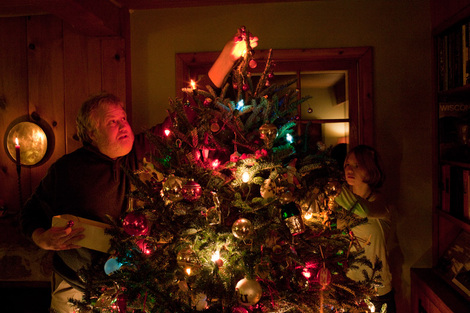
In very low light at some friends' Christmas party, the 5D Mark II and 35/1.4 acquitted themselves splendidly, giving the D700 an Alydar-like run for the money.
Artifacts
Here we go.
I have to admit I have some mild reservations about the 5D Mark II's image quality. It's very good, no question: Canon has hit the "what consumers want" targets on the nose: More Megapixels! Less Noise! (Great Taste, Less Filling). But there's at least a partial price to pay for all that tasty goodness. It shows up in the form of what I'd group under the heading "artifacts."
It's been eight or 10 years since "purple fringing" (also called "CA," not entirely accurately) first heaved into our collective consciousness as a peculiarly digital anomaly, and since then, other artifacts have been dealt with in their turn. I don't see much in the way of purple fringing at all from the 5D Mark II, but there's what Carl Weese calls "blue replacement," by which narrow objects imaged against a brighter background change from their own color into a darkish pastel hue. You see it most often in twigs and telephone lines. The 5D Mark II isn't particularly bad, but it shows up a lot more than it does from the D700. And its susceptibility to blue replacement makes it a candidate for a lovely lens aberration that I'd never actually seen before in a picture I've taken myself—longitudinal chromatic aberration (LoCA), which shifts objects in front of the plane of best focus to magenta and those in back of the plane to green.
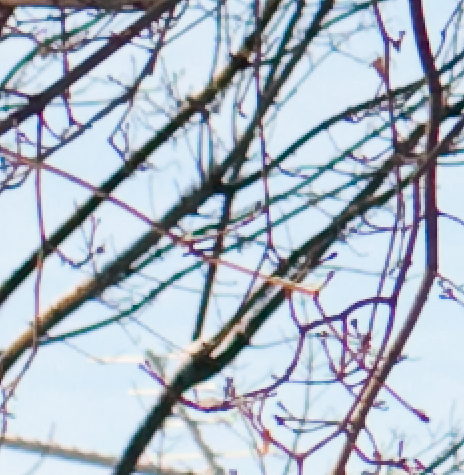
Canon EF 35mm ƒ/1.4 LoCA on the 5D Mark II
Then there's the quality of the Canon's noise. It's a bit tilted towards the chroma type, and it has a weird, blotchy character. (I don't read the forums—is the consensus that Canon is applying noise reduction to the raw file?) Note that the following is a small section of a much larger picture.
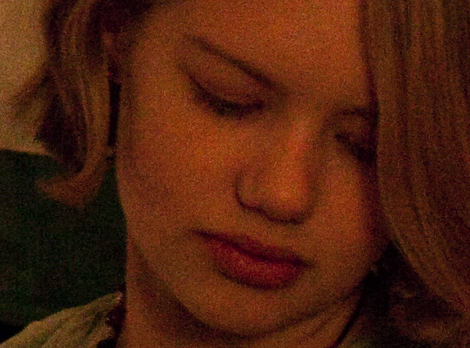
The 5D Mark II at ISO 5000 and, after you click on this image to open it, 100%
Here's a section at 300% (again, that's after you open it) to show the character of the noise:
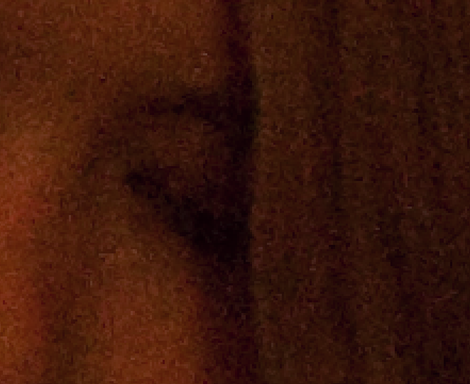
Of course, this is pure pixel-peepery...you're never going to see the character of the noise even in imposingly large prints. I'm less sanguine, however, about the Canon's color performance at high ISOs. It seems to resist correction more than I'm used to, at least in ACR.
Then there's an entirely new artifact that, as far as I know, is unique to the 5D Mark II: sometimes you'll see black fringing next to blown highlights, but only on the right-hand side. Weird. This shows up fairly often in the shooting I've been doing at night that includes Christmas lights.
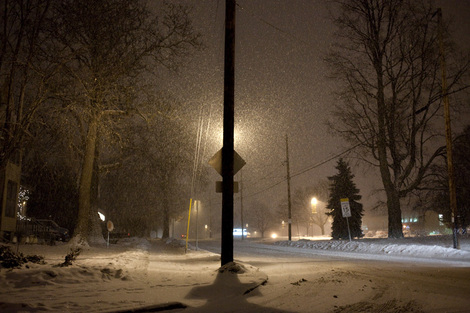
You can see it in the detail of this shot, from near
the left edge. Look at the highlights at the top and bottom of this detail:
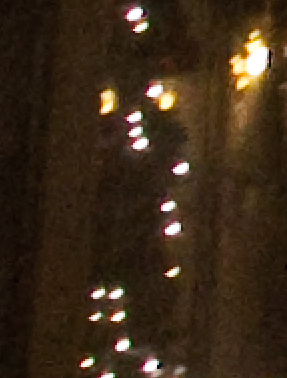
This doesn't bother me at all—you'd never see it in prints and you probably wouldn't notice it if it were visible—but hey, I'm just a reporter, I gotta report what I see.
I think we can be reasonably certain that Canon will fix this in a future firmware update.
Finally, there's highlight clipping. This is probably my most serious reservation about the Canon because it really does affect the look of pictures. Here I have to go back to the Sony A900, which is particularly good in this respect. This is a detail (maybe 30%) of a larger image, and this is somewhat behind the plane of focus (the subject was a girl lying on the bed*), so don't expect it to be sharp—just look at the tonality (luminance values):
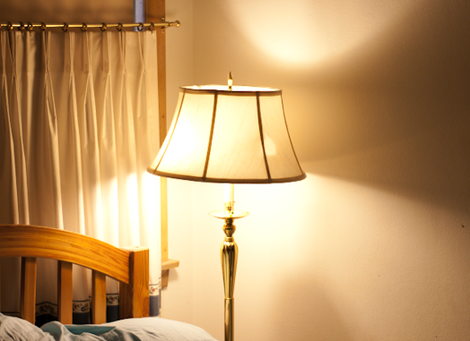
Sony A900 detail
It's just a screen shot from ACR, no corrections applied. Now look at the same section with some judicious use of the "Exposure" slider and the "Recovery" slider slammed all the way to the right (you can see that it's picked up a bit more blue, for one thing):
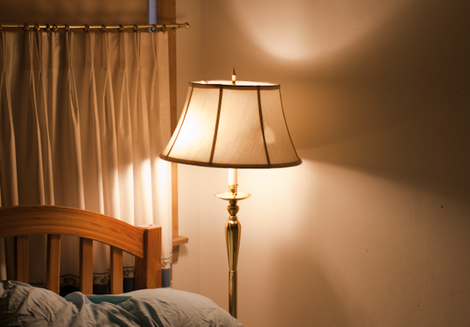
Nothing startling. But the above is a pictorially convincing result to me. The transitions are soft, natural, the rendition of the bright light convincing. You expect the area near a lamp to be somewhat blown out...there are three areas here that remain blown out, but they all transition naturally, and you even see just enough detail in the stem of the lamp below the shade (which is white, even) to indicate visually what it is. Tonally, I can't say I'd demand more than the above from Tri-X, which is high praise for a digital camera. This is one of the real strengths of the A900 and one of a number of reasons why I give it my personal palm for IQ.
The 5D Mark II's transitions to blown highlights, by comparison, seem to be more like a throwback to the era when 6-MP DSLRs were the SOTA**. They tend to be harsh and abrupt, and less fixable.
Canon conclusion
The 5D Mark II is a brilliant camera in many ways. It has more, and better, of most of the good things we like. But my holistic overall impression is that its images just look more digital, in some fundamental way, rather than just "photographic."
To test that impression, I compared it with what is becoming my "Old Trusty," the Pentax K20D, a currently $810 camera with a really good APS-C sized sensor (and which I also don't own, N.B.) The 5D Mark II is better than the 14.6-megapixel K20D. But it's not that much better. If the 5D Mark II lags behind the D700 by not-quite-a-stop in high-ISO noise, then the K20D lags behind the 5D Mark II also by not-quite-a-stop—certainly it looks at least as good at ISO 1250 as the Canon looks at ISO 2500 (and yes, I ran the tests). And the Canon does indeed have more resolution—but not that much more resolution. A paper size, maybe? Maybe a tad less?
In my very personal estimation (remember what you promised in the third paragraph of this post!), the A900 and D700 seem like game-changers. They both strike me as enough better than the prevailing standard that they create new paradigms—in very different ways. The Canon 5D Mark II can simply be looked at in two ways. From the positive side, it gives you the lion's share of what the other two cameras do best. And that's good. And from the negative side, it sort of seems like just another digital SLR, only better (and please don't quote that line out of context). Which way will you see it? That I can't say. All three cameras are fine devices with formidable imaging capabilities, and all three deserve your strong consideration....
____________________
Mike
*A canine girl. Don't get excited.
**state-of-the-art
Send this post to a friend
Only 7 shopping days till...oh, never mind.
Amazon U.S. link
Amazon U.K. link
Amazon Germany link
Amazon Canada link
B&H Photo link
Adorama Camera link
Featured Comment by Jeff Baker: "After reading every reviewer's opinions, it seems a leap of faith must still be made, by each shopper individually, and then the real fun begins. There are subtle differences that 100 reviewers might not notice that may make or break your world. The camera is the front end of the workflow, and a lot can be done downstream to enhance, fix, or adjust whatever issues these cameras might have.
"I have an original 5D, and the more I read, the less inclined I am to upgrade to anything. I'm pretty much convinced my 5D has some magic qualities I've not seen elsewhere, and it produces prints up to at least 2x3 ft. without problem. Not sure what else I need. Yep, it doesn't like to focus in very low light, and maybe has other issues, but there's lots of other places to spend money."
Featured Comment by sfwrtr: "Interesting article. I did note that you used ACR to do the Canon 5D Mark II conversion. I have discovered massive defects in the ACR 5.2 release in regards to this camera. The bundled Canon DPP application, though unwieldy, does a better conversion from RAW with significantly fewer artifacts and improved tonality. I don't know about the fringing, but CA compensation is part of the DPP process and it might handle the green and purple problem (dunno). You might want to check it out. I must say I am annoyed at Adobe for releasing my beloved ACR converter too soon, and so is the Canon rep I've spoken to. By the way, I've posted an example of the difference as an animated GIF.
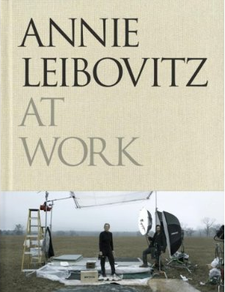 More signs of the Apocalypse: I tend to hate Annie Leibovitz like the worm hates the plow. Some of her stuff is just so horridly schlocky; and I maintain a standardized stance of genial contempt for celebrity photography; and the rest is sour grapes, all sour grapes.
More signs of the Apocalypse: I tend to hate Annie Leibovitz like the worm hates the plow. Some of her stuff is just so horridly schlocky; and I maintain a standardized stance of genial contempt for celebrity photography; and the rest is sour grapes, all sour grapes.
is a pretty fine little book. Ms. L. turns out to be thoughtful and articulate, so the copious text makes for good reading: it's undeniably fascinating to read about such high-profile shoots. And lots of the good, early* work is here, and even some of the ewww pictures look pretty good printed small. I think it would be the rare photography buff (of which I am assuredly one) who would not either learn something from this, or enjoy it, or (like I did) do both.
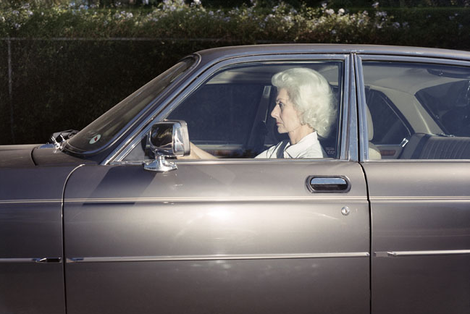
, which is getting a lot of attention and no doubt causing excitement in galleries with a need for work that is safely edgy. To my eye, the pictures not only don't add up to much, they actually diminish each other, and this (popular) book is one that for me is less than the sum of its parts.
, a sleeper of these holidays. (Nobody's talking about this one, except me.) It's not like any one of these pictures takes the top of your head off, but one after another the oceanscapes (some of which are nearly entirely sky) start to seem like figurative Turners, trompe l'oeil Rothkos; you feel alone looking at them, as the photographer must have been alone on the beach. The colors seem as endless as the sky, and the pictures take on a cumulative power that's peace-inducing while not being sleep-inducing. (Don't look at online thumbnails; they don't convey. Even the JPEG of the book cover, below, is not nearly as nice as the book cover actually looks.) A lovely, quiet book you might otherwise miss—and this week's "Recommended by M.J."
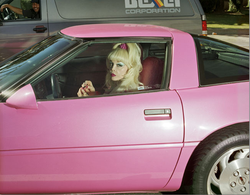 Featured Comment by Randy Cole: "Mike, If you've lived in LA and recognize the woman in the pink Corvette, you will probably appreciate Drive. If not, you probably won't. A book of photos of random people driving? Sounded like stupid hype to me, and then I started looking at the photos. Now I think I'll buy the book. A book of more or less random photos of beach and sky? Now that one doesn't do much for me. No offense, but we're out of synch on these. Keep up the good work anyway! (Note: The woman in the pink 'Vette is Angelyne. Haven't heard of Angelyne? Just Google her name. Only in LA....)"
Featured Comment by Randy Cole: "Mike, If you've lived in LA and recognize the woman in the pink Corvette, you will probably appreciate Drive. If not, you probably won't. A book of photos of random people driving? Sounded like stupid hype to me, and then I started looking at the photos. Now I think I'll buy the book. A book of more or less random photos of beach and sky? Now that one doesn't do much for me. No offense, but we're out of synch on these. Keep up the good work anyway! (Note: The woman in the pink 'Vette is Angelyne. Haven't heard of Angelyne? Just Google her name. Only in LA....)"